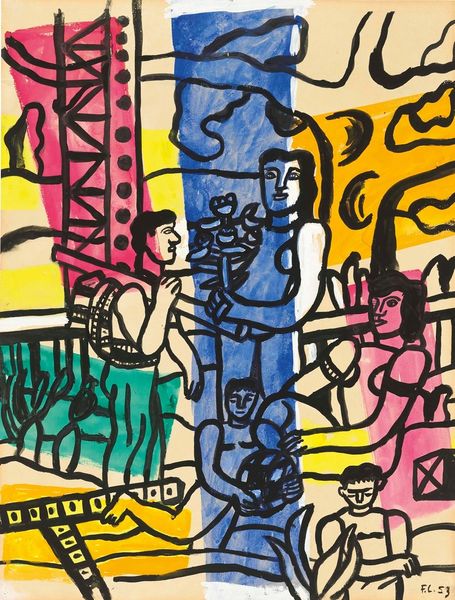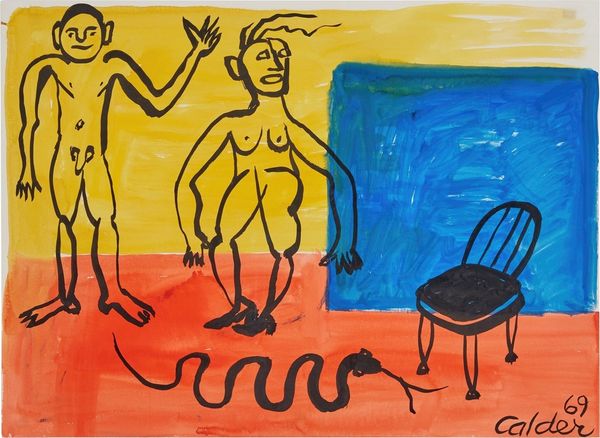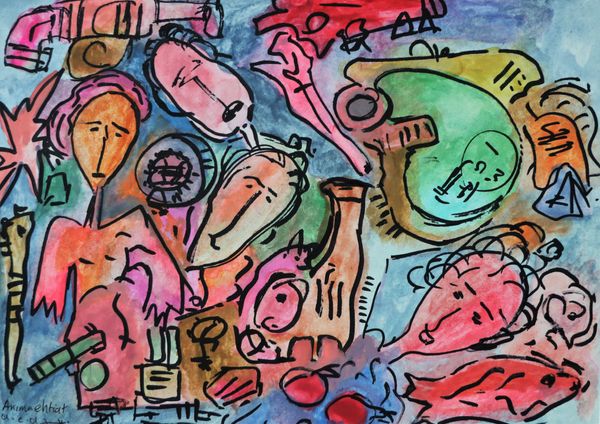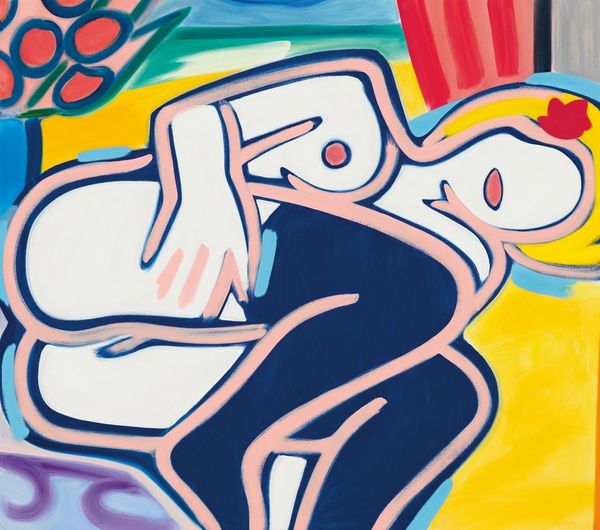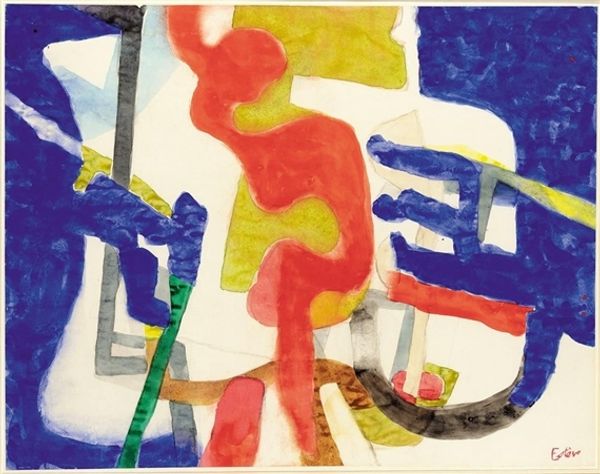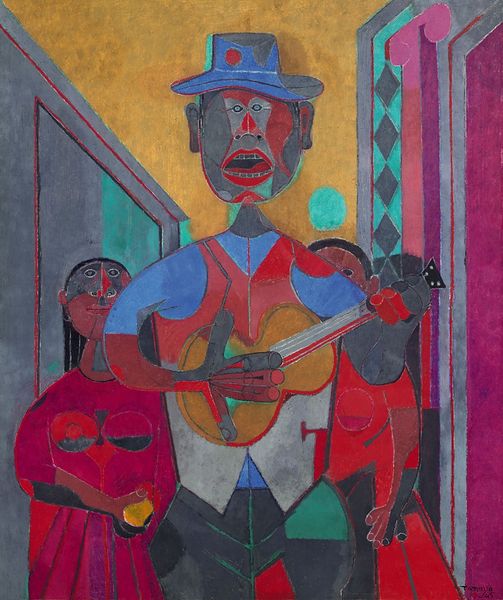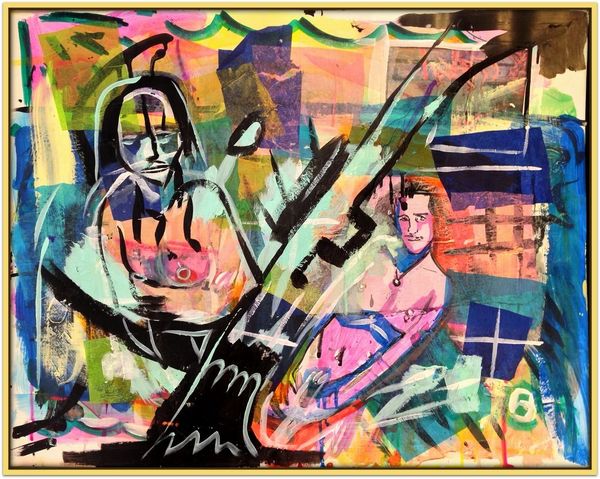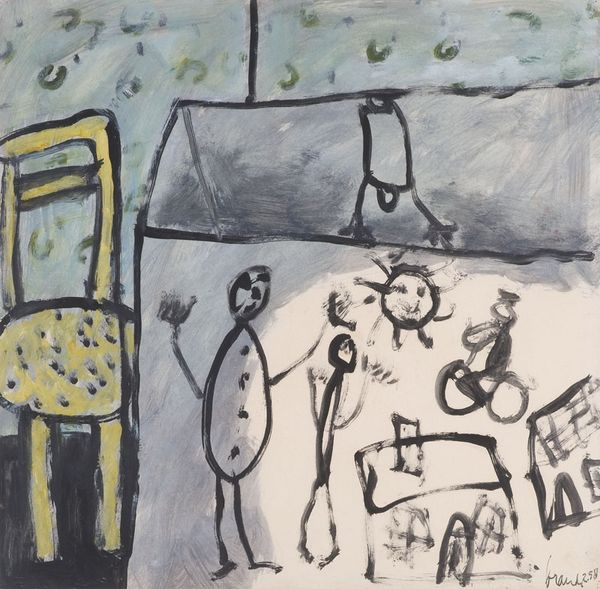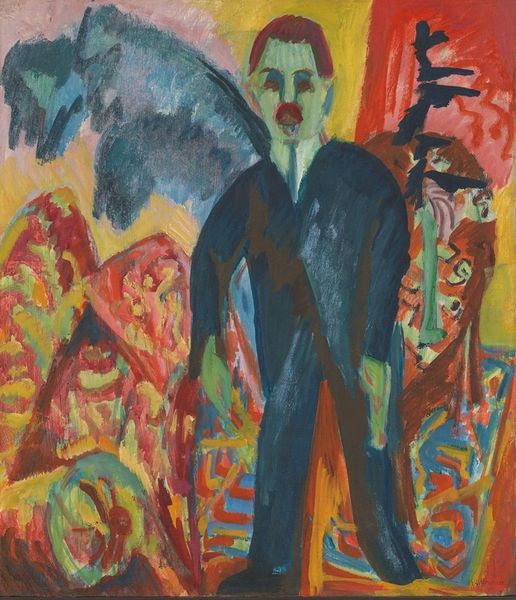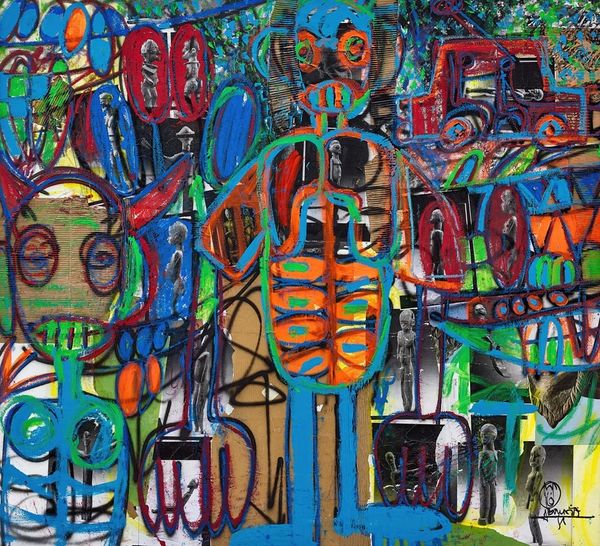
Copyright: Modern Artists: Artvee
Curator: Fernand Léger's "La fermière," painted in 1953 using oil paints, immediately strikes me with its stark contrast between the almost cartoonish figures and the abstract landscape surrounding them. What's your initial impression? Editor: The composition feels surprisingly fragmented. It's this uneasy balance between celebrating rural life and reflecting the disruptions of modernism, perhaps echoing post-war societal anxieties. The colors, while bright, have a slight melancholy to them. Curator: Yes, there is an intentional disruption, and Léger frequently employed such formal contradictions, almost as a strategy for prompting reflection on traditional symbols. Observe the farmer woman’s garb, its shape acting as an archetypical figure of labour—reminiscent of Byzantine mosaics in its simplicity. It's as though he is imbuing her with near saintly qualities through form alone. Editor: Precisely, but her idealized form contrasts sharply with the cubist elements. Is he critiquing the romanticization of agricultural labor, acknowledging the realities of labor that are far from idyllic? Note how her facial features are nearly erased, reduced to geometric shapes-- dehumanizing her image, ironically. Curator: That's compelling. While the flattened perspective can, as you mention, be read as depersonalizing, one might also consider Léger engaging with ideas surrounding collective identity, the reduction suggesting that "the farmer" can mean anyone engaged with similar efforts. Editor: I suppose it can go both ways. But let's not forget the significance of gender too. By depicting the "farmer" as a woman, is Léger challenging or perpetuating stereotypical gender roles in agricultural life? Where are the men? Is there any critical discourse at play regarding the gendered division of labor in a farming environment? Curator: These visual choices do raise these important questions and challenge assumptions about work roles. Perhaps it prompts contemplation of the many contributions women bring to communities worldwide that are traditionally unnoticed, just like those archetypical byzantine Madonnas silently bearing witness over centuries. Editor: Yes, exactly! Thank you for shedding a different perspective; there's much more complexity beneath the surface than I initially thought. Curator: The same to you, I am more keenly aware of the questions regarding representation and lived realities of labourers due to your insight.
Comments
No comments
Be the first to comment and join the conversation on the ultimate creative platform.
